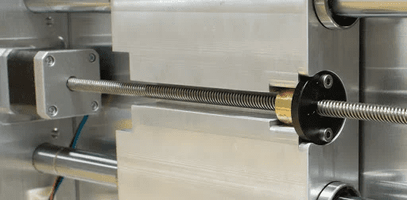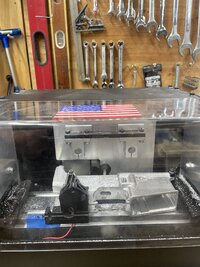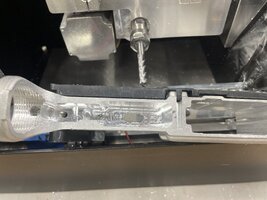-
If you enjoy the forum please consider supporting it by signing up for a NES Membership The benefits pay for the membership many times over.
You are using an out of date browser. It may not display this or other websites correctly.
You should upgrade or use an alternative browser.
You should upgrade or use an alternative browser.
BFYTW
- Thread starter allen-1
- Start date
allen-1
NES Member
Yes. GG2Very nice.
Izzat ona dem der GG machina?
allen-1
NES Member
Thanks for including the gps location in your exif data . It was nice knowing you
![ROFL [rofl] [rofl]](/xen/styles/default/xenforo/smilies.vb/013.gif) I live in Georgia. I've broken no state or federal laws.
I live in Georgia. I've broken no state or federal laws.mu2bdriver
NES Member
- Joined
- Jan 7, 2009
- Messages
- 1,648
- Likes
- 2,215
How do you like it? Are you going to upgrade to the GG3?Yes. GG2
allen-1
NES Member
I like it. I’m not upgrading. The GG3 has a lot more capability, but the GG2 dies what i need/want.How do you like it? Are you going to upgrade to the GG3?
If i were buying today I’d get the 3
sorry i am not up to speed with this stuff - can it do essentially only lowers, or is it a true universal CNC rig capable of anything you may want to design?If i were buying today I’d get the 3
they say there - 'open source' - is it like a 3d printer with a drill, essentially? or more like a production bigger CNC?
allen-1
NES Member
sorry i am not up to speed with this stuff - can it do essentially only lowers, or is it a true universal CNC rig capable of anything you may want to design?
they say there - 'open source' - is it like a 3d printer with a drill, essentially? or more like a production bigger CNC?
GG2 is capable of doing lowers plus a bit more.
GG3, (which I do not have, have not seen, and have only read about), is much more capable than GG2. It's got beefier motors, can do slide cuts for example. There are 80% kits out there for 1911s, which people were struggling to complete with GG2 - supposedly MUCH easier with GG3.
It is a very small footprint CNC that runs GCODE. There's an active community much like the 3D printer community that creates GCODE for the machine.
That's all I can really say; my experience is with the GG2 - and rather limited.
ReluctantDecoy
NES Member
sorry i am not up to speed with this stuff - can it do essentially only lowers, or is it a true universal CNC rig capable of anything you may want to design?
they say there - 'open source' - is it like a 3d printer with a drill, essentially? or more like a production bigger CNC?
Hobby level 3 axis CNC machines aren't new. What sets this machine apart from, say, a Carbide 3D Nomad is mostly the existing Gcode library specifically for this machine's design, and community support. That aside, this would still make an excellent general purpose hobby level CNC machine. The GG3's torque blows the Carbide 3D out of the water, and the GG3 appears to be cheaper too.
Carbide 3D Nomad 3 CNC Machine - Gray
The Carbide 3D Nomad 3 is a powerful, compact desktop CNC machine that is easy to use and packed with a ton of great features. Small footprint - fits any workspace Cut and engrave a wide variety of materials - even metals! Custom spindle and drive electronics Automatic tool length measurement...
i am curious about it all, but, cannot just dump a $2.5K into an unknown experiment.Hobby level 3 axis CNC machines aren't new. What sets this machine apart from, say, a Carbide 3D Nomad is mostly the existing Gcode library specifically for this machine's design, and community support. That aside, this would still make an excellent general purpose hobby level CNC machine. The GG3's torque blows the Carbide 3D out of the water, and the GG3 appears to be cheaper too.

Carbide 3D Nomad 3 CNC Machine - Gray
The Carbide 3D Nomad 3 is a powerful, compact desktop CNC machine that is easy to use and packed with a ton of great features. Small footprint - fits any workspace Cut and engrave a wide variety of materials - even metals! Custom spindle and drive electronics Automatic tool length measurement...www.matterhackers.com
plus i am not interested that much to mill guns, so it all depends upon the factual CNC capabilities of this platform. would be very interesting to look at one live, if anyone here would get one.
is it like a same principal workflow - to design parts in fusion 360, then slice them into gcode and feed those files to that thing? can it be used with an octoprint?
that picture from carbide nomad looks a bit like a joke - it looks just like a stepper motor from the creality ender 3d printer:

Last edited:
ReluctantDecoy
NES Member
i am curious about it all, but, cannot just dump a $2.5K into an unknown experiment.
plus i am not interested that much to mill guns, so it all depends upon the factual CNC capabilities of this platform. would be very interesting to look at one live, if anyone here would get one.
is it like a same principal workflow - to design parts in fusion 360, then slice them into gcode and feed those files to that thing? can it be used with an octoprint?
that picture from carbide nomad looks a bit like a joke - it looks just like a stepper motor from the creality ender 3d printer:
View attachment 697191
The Carbide one is seemingly underpowered. I only posted that as an example of another "desktop" CNC machine. But at 70watts vs 190watt nominal for GG3 (over 350 peak), it isn't even close.
I came really close to buying a GG2, but couldn't pull the trigger for the same sticker shock reason you have. I mean, as just a hobby that I only take semi-seriously, it's a lot. The workflow for most gun stuff appears to be heavily jig dependent and multi-step (stop machine, re-jig, re-measure/calibrate, start new step) to make optimal use of the limited axes. But I don't have hands-on experience in the gun side other than researching my purchase.
Edited to add: 3 axis CNC machines really aren't all that complex, with many overlapping design choices in the desktop models to 3D printers. But agree that the stepper motor for the Carbide one is way too flimsy for the task. Now a 5 axis machine on the other hand...dummy complicated. If I had one of those that broke, I'd be out of luck without factory repair.
Mesatchornug
NES Member
Kinda.is it like a same principal workflow - to design parts in fusion 360, then slice them into gcode and feed those files to that thing?
Except that it's a 3-axis milling machine. Which means you'll need fixturing to hold your raw stock. And you'll need to figure out the right feeds and speeds for the material you're working with on your machine, with your tooling. Cutting Al is different than POM is different than nylon, is different than steel...you get the picture.
On traditional mills, we often use vises to hold our parts, because they're quick and easy. The GG doesn't have a ton of space, so adding a vise will eat up a lot of envelope, unless it's custom designed for the purpose. I started to work on one for my GG1, then got distracted. Also, compared to the 3D printer, it's LOUD. Depending on your arrangement, this may not aid in domestic bliss.
That is actually on my list to try. I was driving my GG1 through their windows program, but it should be controllable by other tools as well. I don't know if anyone has set theirs up to be controlled that way yet.can it be used with an octoprint?
Machining is a much more hands-on process, generally.
Provided the screw is sized right, and the thread is shallow enough, you don't need a ton of motor to do the work. You might be surprised by how small the motors are on conversion kits for Bridgeports.that picture from carbide nomad looks a bit like a joke - it looks just like a stepper motor from the creality ender 3d printer:
View attachment 697191
Yeah, it's rated for "Aluminum, Brass, Copper (Some alloys are more suitable for machining)." The GG3 is rated for steel. It's a whole other game. The GG is also turned on its side, which I find a really interesting way of dealing with helping to evacuate swarf while making the tool more rigid. The Carbide is keeping to the traditional arrangement, and moving the cutting head - which is less than optimal for a small mill.The Carbide one is seemingly underpowered. I only posted that as an example of another "desktop" CNC machine. But at 70watts vs 190watt nominal for GG3 (over 350 peak), it isn't even close.
Not just guns. This is a big part of why machining is slow. It's literally why 3D printing was originally hailed as "rapid prototyping" until they realized printers are slow for their own reasons...I came really close to buying a GG2, but couldn't pull the trigger for the same sticker shock reason you have. I mean, as just a hobby that I only take semi-seriously, it's a lot. The workflow for most gun stuff appears to be heavily jig dependent and multi-step (stop machine, re-jig, re-measure/calibrate, start new step) to make optimal use of the limited axes. But I don't have hands-on experience in the gun side other than researching my purchase.
5 axis is really not that much more complex. it's two more motors, with some more structure and sensors.Edited to add: 3 axis CNC machines really aren't all that complex, with many overlapping design choices in the desktop models to 3D printers. But agree that the stepper motor for the Carbide one is way too flimsy for the task. Now a 5 axis machine on the other hand...dummy complicated. If I had one of those that broke, I'd be out of luck without factory repair.
Having said all that, if you're not experienced with machining, and you're thinking of taking the leap into something like the GG for the purpose of making other things, I would take a manual machining class first to get a feel for how it's different. A lot of people think it's just printing in reverse, maybe with a couple more settings. It's really a different workflow, and it helps to understand that by having done the work first. [insert plug for your local makerspace here]
as a part of the soviet education for me was some practical hands on experience we were given to work on mills, lathes and frezer end mills. i probably forgot a ton, but, not enough yet not to know what it is. as an every child there was supposed to be able to operate the mill and make some cannon shells.Having said all that, if you're not experienced with machining, and you're thinking of taking the leap into something like the GG for the purpose of making other things, I would take a manual machining class first to get a feel for how it's different.
what is interesting for me - i see no oil cooling in any of those small things, i guess it is not needed for aluminum work. and it all seems to be pointed horizontal, the drills move in the horizontal plane, not vertical?
anyway, with all that you`ve said - what is your opinion of that GG3 machine? to me it seems somewhat interesting, but, even from how many years had passed, i recall the true mills were able to either rotate the head around 45 degrees or the object plate around - as with only 3 axles of movement for the drill itself it is not a ton of work that you can do.
ReluctantDecoy
NES Member
5 axis is really not that much more complex. it's two more motors, with some more structure and sensors.
Those two extra motors potentially moves it out of my ability to repair though, as I would only assume calibration is all the more difficult with that level of articulation.
Mesatchornug
NES Member
To my knowledge, there's no coolant system. With modern, coated tooling cutting aluminum or plastic, coolant is kind of a bonus. With steel, you still don't strictly need it, but you'll end up taking more, lighter passes, and still wear out your tools a little more quickly.what is interesting for me - i see no oil cooling in any of those small things, i guess it is not needed for aluminum work. and it all seems to be pointed horizontal, the drills move in the horizontal plane, not vertical?
You're right - on the GG, they decided to turn the tool on its side. This lets them use a bigger motor on the spindle while taking up slightly less space. The actual working volume isn't huge, though.
The ability to tilt, swing, and nod the head is kind of obviated by the fact that your path planning is more complex than on a manual mill. The result is that you produce the same stair-stepped surfaces as a 3D printer might (potentially smoothed with a ball mill). If you need undercuts, you'll either have to gain access from the back/sides in additional setups, or use special tools (like dovetail cutters) to add those features.anyway, with all that you`ve said - what is your opinion of that GG3 machine? to me it seems somewhat interesting, but, even from how many years had passed, i recall the true mills were able to either rotate the head around 45 degrees or the object plate around - as with only 3 axles of movement for the drill itself it is not a ton of work that you can do.
It requires more planning than FDM, because you're differently limited by your tools. But once you understand the tools, your options are "limited only by your imagination."
To answer the central question - I think it depends on your needs. If I wanted to be able to finish lots of AR and P80 lowers, and maybe to do optic cuts on slides, etc. I would definitely buy the GG3. I would then learn how to use it for other stuff too.
If I were a hobbyist who was curious to have a more traditional CNC on my desktop and thought it would be cool to also cut an occasional lower, I might consider converting something like this guy:

HiTorque Micro Mill | Micro Milling Machine for Sale
This HiTorque Micro Mill is the most powerful mill in its class. Shop this 250 watt micro milling machine for sale at LittleMachineShop today!

Mini Mill CNC Conversion Plans | CNC Mill Conversion
Learn how to convert a mini mill to a CNC with these CNC conversion plans. Shop this this CNC mill conversion plan online at LittleMachineShop today!
It would mean more work up front, but could provide a more broadly capable machine and leaver more budget for tooling.
Because I already have a GG1, I'm curious to see what I can eke out of it. But right now it's sitting, waiting for a more suitable home. For my use it's interesting, and has the bonus of its design function...
Share:




